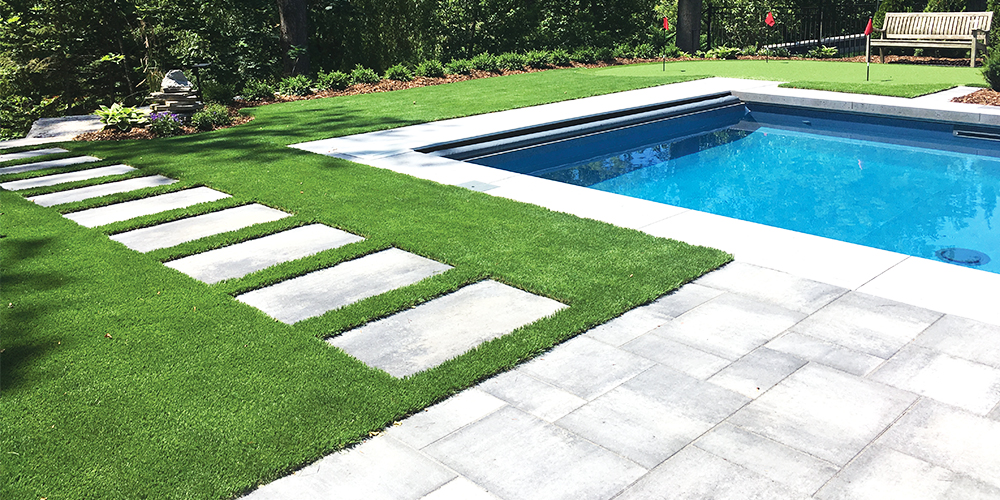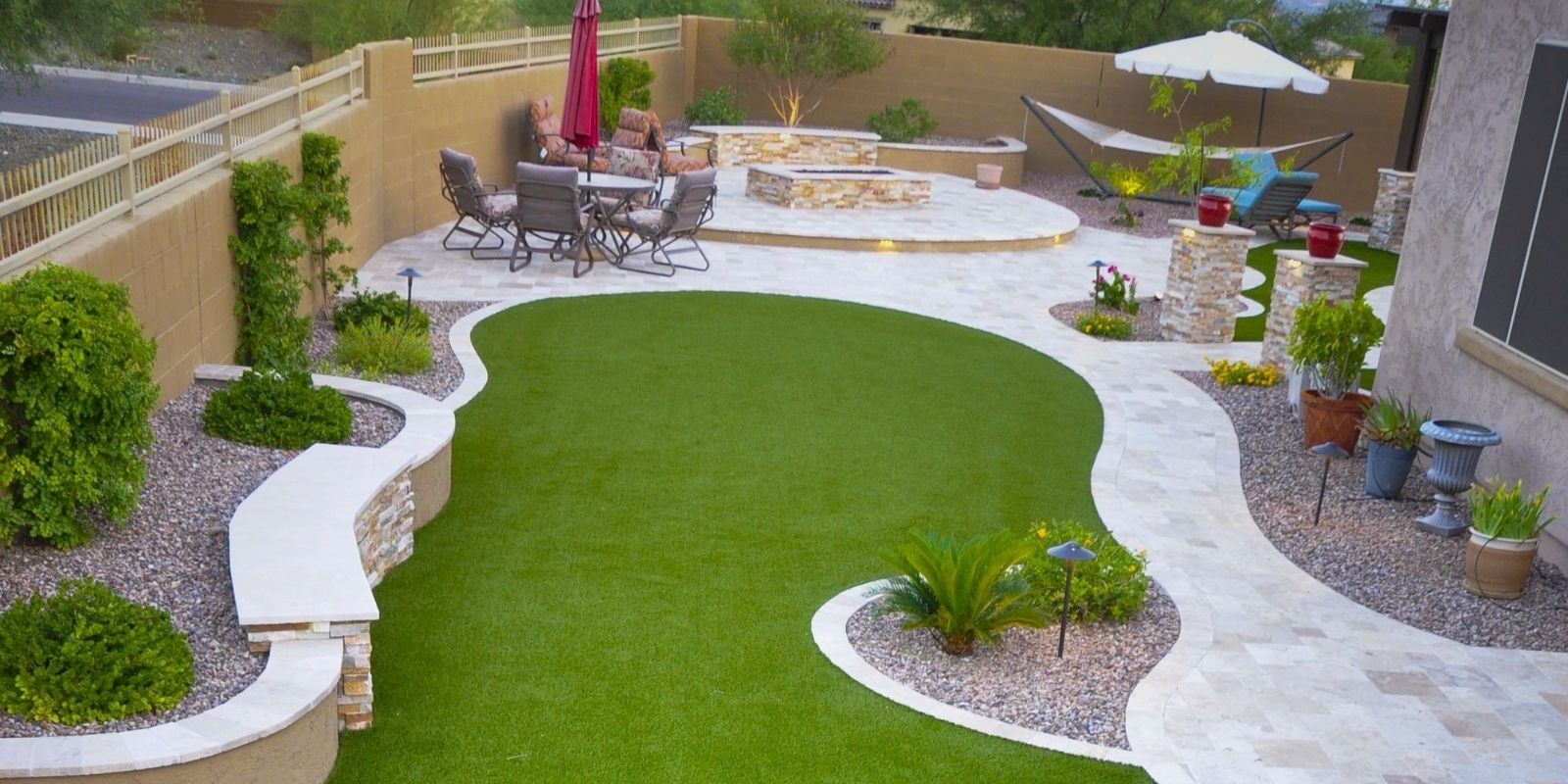Find Trusted Artificial Turf Companies Phoenix for High-Quality and Realistic Grass
Find Trusted Artificial Turf Companies Phoenix for High-Quality and Realistic Grass
Blog Article
Explore the Environmental Conveniences of Opting for Artificial Grass Solutions
The fostering of synthetic grass services presents a compelling opportunity to deal with pressing environmental challenges. By considerably minimizing water usage and lessening the application of unsafe chemicals, these choices not just advertise lasting landscaping but also protect local ecological communities. Moreover, the reduced carbon impact linked with reduced maintenance activities contributes to a more lasting strategy to land monitoring. The implications of these advantages extend past plain conservation initiatives, raising inquiries concerning their long-term impact on environment preservation and total environmental equilibrium. Exploring these measurements reveals a complicated interaction worth thinking about.
Water Conservation Perks
One of the most significant advantages of fabricated lawn is its ability to conserve water. In contrast, fabricated lawn does not need watering, considerably decreasing the overall need for water sources.
By eliminating the requirement for regular watering, synthetic grass adds to sustainable landscape techniques and helps reduce the environmental effect of excessive water usage. The preservation of water expands to the decrease of runoff, which can lead to dirt disintegration and river pollution.
Furthermore, the installation of synthetic grass allows towns and home owners to designate water sources extra efficiently, concentrating on crucial usages such as drinking water and farming. The shift towards synthetic grass not just promotes responsible water use yet additionally straightens with broader ecological objectives targeted at maintaining all-natural resources.
As neighborhoods progressively prioritize sustainability, the water conservation advantages of artificial turf present a compelling case for its adoption in commercial and residential landscaping tasks.
Lowered Chemical Use
The shift to synthetic turf considerably decreases the dependence on chemical therapies typically used in all-natural lawn maintenance. Traditional lawn administration normally involves the application of fertilizers, pesticides, and herbicides to promote growth and control insects. These chemicals can present risks to human wellness, regional wild animals, and the environment, adding to soil and water contamination.
In comparison, fabricated turf gets rid of the demand for these damaging materials. By minimizing the release of synthetic compounds into the ecological community, artificial turf promotes healthier soil and water systems.
In addition, the absence of chemical runoff connected with synthetic grass setups aids shield neighborhood rivers from air pollution, sustaining aquatic life and keeping biodiversity. Arizona turf. As areas increasingly focus on sustainable methods, selecting synthetic grass offers a practical remedy that aligns with ecological preservation objectives. With this shift, residential or commercial property owners can take pleasure in rich green rooms without compromising ecological wellness, leading the method for a more lasting future
Reduced Carbon Footprint

In addition, the installation of fabricated turf can lead to substantial water preservation. Natural yards call for considerable amounts of water for watering, which not just contributes to the carbon impact associated with water extraction and therapy but also stress neighborhood water resources. In contrast, synthetic grass needs minimal maintenance, needing no watering, therefore substantially reducing water usage and its connected power prices.
In addition, the longevity of artificial grass contributes to its reduced carbon effect. With a life expectancy of approximately 15 years or even more, the demand for constant substitutes is diminished, resulting in less waste and lower energy consumption in manufacturing and throwing away traditional grass alternatives. Overall, synthetic grass presents a sustainable option for eco aware landscape design.
Environment Preservation
Habitat conservation is an essential factor to consider in the discussion index over landscape design options, particularly when comparing synthetic grass to all-natural turf. Natural yard yards usually call for substantial maintenance, including the use of herbicides, chemicals, and fertilizers, which can negatively affect regional ecosystems. These chemicals can leach right into the dirt and rivers, damaging native flora and animals and interfering with local environments.
On the other hand, synthetic grass presents a possibility to minimize the ecological impact of landscaping. By choosing for synthetic lawn, house owners can minimize the interruption of all-natural habitats connected with conventional grass care methods. Artificial grass eliminates the demand for harmful chemicals, therefore protecting nearby wildlife and keeping the integrity of surrounding ecological communities. In addition, the installation of synthetic grass can result in the conversion of previous lawn locations into more biodiverse landscapes, such as pollinator gardens or indigenous plant locations, which Learn More can sustain regional wild animals.
Eventually, the shift to synthetic grass not just saves water and minimizes upkeep efforts however additionally cultivates an extra harmonious relationship in between human tasks and the natural surroundings, promoting environment conservation at the same time.
Long-Term Sustainability
Long-lasting sustainability is a crucial consider examining the advantages of synthetic grass over standard lawn lawns. One of one of the most substantial benefits of synthetic turf is its sturdiness; it can last up to 15-20 years with minimal upkeep, whereas all-natural turf calls for regular reseeding and replacement. This long life decreases the need for consistent resources, such as water, fertilizers, and chemicals, which are crucial for keeping a healthy turf yard.
Additionally, synthetic grass adds to a reduction in carbon discharges connected with yard treatment equipment. Standard lawns usually require gas-powered lawn mowers, trimmers, and blowers, all of which add to air pollution. Turf installation phoenix az. Arizona turf In comparison, artificial grass eliminates the demand for such devices, advertising a cleaner environment
In addition, the production of synthetic lawn progressively uses recycled materials, improving its sustainability account. As suppliers embrace environment-friendly techniques, the environmental footprint of synthetic grass remains to lessen.

Conclusion
The fostering of synthetic grass solutions offers considerable ecological benefits, including considerable water conservation, minimized reliance on damaging chemicals, and a lower carbon footprint. Fabricated lawn help in protecting all-natural environments by reducing land disturbance and promoting lasting sustainability via the usage of sturdy products. Collectively, these elements highlight the capacity of synthetic grass to add positively to environmental wellness and use a feasible alternative to traditional landscape design methods in a progressively resource-conscious globe.
In comparison, synthetic lawn does not require watering, significantly lowering the general demand for water sources. By reducing the launch of artificial compounds into the community, fabricated lawn promotes much healthier soil and water systems.
Additionally, the installation of artificial turf can result in substantial water conservation. In contrast, artificial turf needs marginal maintenance, calling for no watering, thus dramatically decreasing water use and its associated energy prices.

Report this page